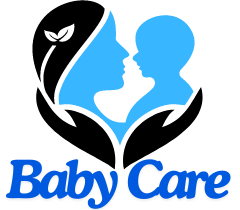Welcoming a newborn into your family is a joyous moment, but it also raises important questions, like when is it safe for your little one to be around toddlers? Newborns can generally be around toddlers after they receive their initial vaccinations, usually around the 2-month mark.
However, it’s crucial to ensure that the toddlers are healthy and practice good hygiene around the baby.
This introduction to our blog post will delve into the factors to consider, like vaccination schedules and health precautions, ensuring your newborn’s safety in the presence of energetic toddlers.
Understanding Newborn Immunity
A significant concern with exposing newborns to toddlers is the potential for infection. Newborns have virtually no immunity for the first few months of life, which makes them vulnerable to illnesses that older children can easily transmit. So when is it safe for toddlers to meet the new baby?
During the First Two Months
For the first two months, it is best to limit your newborn’s exposure to toddlers and young children outside the home.
A newborn’s immune system is still developing during this time. Exposure to illnesses from public places where children congregate can be dangerous.
The exceptions would be interactions with healthy toddler siblings or relatives that are closely monitored by parents.
After Two Months
After your baby reaches two months of age, their immune system will be more robust, and they can begin to interact safely with healthy toddler siblings, relatives, or friends.
However, it is still essential to be vigilant about hand washing and avoiding contact with anyone showing signs of illness.
During the early months, have siblings and visitors wash hands before interacting with the newborn.
Carefully supervise all interactions where the toddler is touching or in very close contact with the baby.
Do not allow toddlers to put their hands or objects in the baby’s mouth or touch the eyes and nose, which can introduce germs.

After Three Months
By three months of age, a healthy full-term newborn will have developed more immunity through vaccines and can interact more freely with family toddlers.
However, parents should still be cautious about allowing contact with non-family toddlers in public spaces or groups due to higher risks of exposure to illness.
Toddler Behaviors that Can Harm a Newborn
While infections are a considerable risk, toddlers can also unintentionally harm a newborn simply through their energetic, impulsive behavior.
Toddlers lack complete control and understanding of their actions. Parents need to closely monitor all toddler-newborn interactions.
Lack of Gentleness
Toddlers often handle babies without care – poking fingers in the eyes, pulling on limbs, or landing total weight on the tiny body. They should never be left alone with access to a newborn.
Grabbing Toys
Toddlers are self-centered and may try grabbing items from a baby, like pacifiers, bottles, or toys, which could result in scratches or other injury to the newborn.
Difficulty Sharing Parental Attention
The toddler is used to being the center of Mom and Dad’s affection. They may pinch, hit, or try to climb onto a nursing newborn to regain that attention. Extra patience, distraction, and praise for “being a good helper” is required.
Preparing Toddlers for a New Sibling
- Read stories about new babies – highlight the fun and responsibilities.
- Spend one-on-one time together before the birth.
- Bring a gift “from the baby” and discuss gentle hands.
- Consider including them in naming the baby to build acceptance.
Proper preparation, along with vigilant supervision, ensures safe, successful newborn-toddler interactions!
Protecting High-Risk Newborns
Parents of preemies or newborns with health conditions may need to be even more restrictive on exposure to toddlers and crowds.
Check with your pediatrician about specific guidelines based on your baby’s needs. When is it reasonably safe for a high-risk newborn to interact with toddler siblings?
Understanding Your Newborn’s Risk Factors
- How premature? Babies born more than 8-12 weeks early are most vulnerable.
- Birth weight – The lower the weight, the higher the risk.
- Still, building immunities? Chronic lung disease, anemia, or other conditions may delay immune system strength.
- Home oxygen therapy – This indicates a higher-risk baby.
Have an open discussion with your pediatrician. Be fully educated on your newborn’s medical issues to make the soundest decisions about toddler interactions.
Two Month Guideline Still Applies
The two-month guideline serves as an essential starting point unless otherwise directed by the doctor based on medical history.
Babies discharged from NICUs (newborn intensive care units) have often been exposed to a wide variety of germs, so home may not feel that different. Yet each case differs – the parents must educate themselves fully.
Early Interactions Still Have Value
While restricting exposure, also consider your toddler’s emotional needs. Using masks, hand cleaning, and distancing – some short, supervised newborn interactions earlier than 2 months may be reasonable if they help the older sibling bond.
Check with the pediatrician to review techniques appropriate for your child’s risks. With creativity, both medical safety and family bonding can occur!
Common Illnesses Toddlers Can Transmit
Understanding the types of conditions toddlers can spread to vulnerable newborns will help parents take wise precautions. What toddler illnesses are of the highest concern?
Upper Respiratory Infections
Runny noses, sore throats, coughs, and sneezes easily spread infection. These include:
- Common cold
- Influenza
- Croup
- Bronchiolitis
- Pneumonia
Though not always preventable, avoiding direct newborn contact at first sniffle is wise. Seek early treatment for sick toddlers to shorten infection duration.
Hand, Foot and Mouth Disease
This viral disease spreads through close contact, coughing, and sneezing. It causes a mild rash but is highly contagious. Keeping infected toddlers separated for a whole week is vital.
Conjunctivitis (Pink Eye)
Pink eye spreads rapidly through eye and hand contact. It is uncomfortable and challenging to treat tiny babies. Keep toddler’s hands clean and avoid touching newborn eye areas if symptoms appear.
Stay alert to any toddler illnesses within your family or social circles. Seek immediate treatment while limiting newborn exposure to reduce transmission opportunities.
Creating Safe Spaces for Newborn-Toddler Interactions
The correct preventative measures and environment setup make new sibling interactions safer and more enjoyable for all. What are helpful tips to allow visiting toddlers access to a newborn?
Outdoors is Best
When weather permits, interacting on a clean blanket outdoors eliminates recycling germs in enclosed air spaces.
Open air circulation reduces infection transmission chances. Meet at parks for play dates when possible during the first couple of months.
Limit Durations
Restrict toddler visits with a vulnerable newborn to very short durations, even with reasonable precautions. This allows joyful bonding while reducing illness risks.
Use Physical Barriers
Placing newborns in bassinets or baby swings creates a physical separation from toddlers.
Require hand washing before approaching the baby. Only permit touching feet as opposed to face and hands, which go into the mouth.
Disinfect Toys
If toddlers bring their toys, use antimicrobial wipes on all surfaces before allowing them into baby areas. Avoid stuffed animals or cloth toys which cannot be effectively cleaned.
Stay proactive! Report any illness symptoms in interacting toddlers immediately to prevent quick spread to vulnerable little ones.
Celebrate when your baby reaches more robust immunity levels for less restricted interactions.
Conclusion:
Balancing the health needs of a vulnerable newborn with the emotional needs of eager toddler siblings poses challenges for every parent.
While you cannot eliminate risks, following some basic guidelines helps ensure safety.
Limit interactions during the first two months when possible and always supervise directly once visits begin.
Remain vigilant to illness within the home while also preparing toddlers for their unique role with developmentally appropriate activities.
Celebrate each new milestone your infant reaches on the path to stronger immunity and less restricted interactions.
Stay patient, attentive, and educated on your child’s specific medical needs. With thoughtful precautions, every member of the growing family can feel loved and included.

